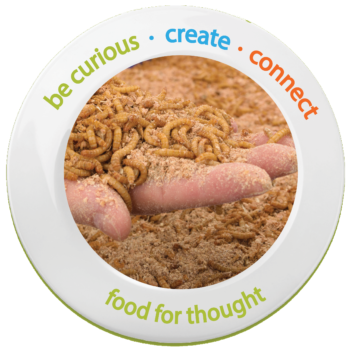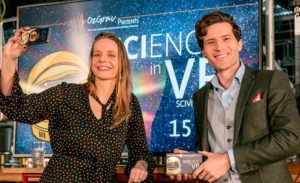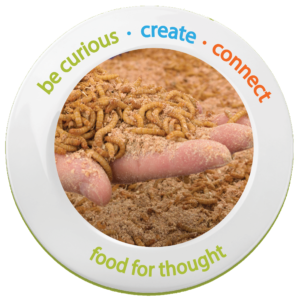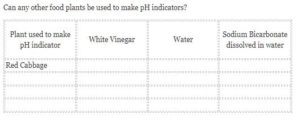National Science Week…and that’s a wrap!

Science Week is one of our favourite times of the year because we get to celebrate Science by talking about it, doing it and creating a buzz around it.
Every year, Science Week has a school theme, drawing particular attention to a field of Science. This year, we focused on Food: Different by Design. It honours the United Nations International Year of Fruits and Vegetables and the International Year of Creative Economy for Sustainable Development.
Just by way of history, National Science Week was established 24 years ago. Its aims are to acknowledge and showcase Australian Scientists and to ignite an interest and curiosity in understanding the world in which we live.
Running each year in August, it features hundreds of events around Australia, hosted by universities, schools, research institutions, libraries, museums and science centres like TwistEd Science! These events attract a wide audience from children to adults, and science amateurs to professionals. Over one million people participate in science events across the nation. Isn’t that fabulous?!
For us at TwistED Science, we were looking forward to throwing open the doors of our brand new interactive Science centre in Moorabbin. We had a fantastic workshop ready for you ‘Food for Thought’ exploring one of the biggest sustainable food trends; edible insects! We would have had a tonne of fun exploring insects as a food source and how to farm your own. You might have even gotten to eat a bug or two! But more on that later!
 I know I’m teasing you now but we also had special Science Week play zone experiences in our Echuca and Moorabbin centres.
I know I’m teasing you now but we also had special Science Week play zone experiences in our Echuca and Moorabbin centres.
The ARC Centre of Excellence for Gravitational Wave Discovery (OzGrav) were going to visit Twisted during the week to set up a bunch of amazing exhibits which you could have experienced first hand. We had Virtual Reality headsets for you to take a virtual tour around the solar system and discover old stars and gravitational waves. You would have had the chance to grab a virtual planet, throw it into orbit around a black hole and learn about gravity’s pull!
Unfortunately we couldn’t get to run these events because of the COVID lockdown measures but when you are as passionate about Science as we are, we were always going to mark Science Week some way.
We hosted a great SciVR Session with scientists Alan Duffy and Rebecca Allen. For those of you who picked up your mini-VR headset and joined us in exploring a Virtual Universe, we hoped you found it fascinating and got to ask all those burning questions about the final frontier!
Food for Thought; of Bugs and Things

Getting back to eating bugs! There is actually a name for it and that is Entomophagy. Did you know insects only require a fraction of the land, water and resources, and produce minimal waste when compared to other animals? Plus they are also high in omega-3, vitamin B12 and iron. Two fantastic reasons to consider them a viable food source. The First Nations peoples in Australia are already ahead of the game. There are 60 native insect species traditionally consumed by First Nations peoples, including the well known bogong moths and witchetty grubs. Plus many more cultures have been consuming insect protein for thousands of years.
The CSIRO says that while people are becoming braver in our food choices, Australia still lags behind the world in eating insects. But as more and more of us recognise the impact of climate change and the environmental footprint of our food, we may start to think about insect protein differently. But rather than replace traditional meat sources like steaks or snags, the CSIRO challenge us to consider edible insects as a complement to them. Dr Ponce Reyes says
“Insects can help redistribute our protein intake across a day. For example, if you start the day off with a serve of granola fortified with cricket powder, you will increase the protein consumption in the morning.Or having cricket-flour banana bread served as a mid-morning snack might keep your appetite at bay until lunch time.” I don’t know about you, but I think I could wrap my mind around that. Just don’t dangle something alive and squirming in front me!
But what do edible insects actually taste like? Some people say Bogong moths taste like peanut butter. If nuts aren’t your thing, green tree ants reportedly taste like zesty lime. At TwistED Science, we have an edible insect trolley that we wheel out to our unsuspecting visitors sometimes. I wonder what you would think of that? Would you dare? We even have some edible insects coated in sugar in our gift shop and also insect chips for something savoury. Another reason to visit TwistEd!
If you missed out, remember that Science Week is one week out of 52 and every week is a great week to Science. Keep reading, keep discovering and keep being curious! If you want a quick Science fix, why not check out our Youtube channel for some zany, fun experiments.
https://www.youtube.com/c/TwistedScience
And if you would like to do some experiments at home, the National Science Week website https://www.scienceweek.net.au/diy-science/ has plenty of fun and interesting ones to try. Like this one!
DIY Science – Five Serves of Science
Fruits and vegetables are packed with nutrients and stuffed full of science! Use the chemicals in five different colourful food plants to do a surprising science experiment.
Safety
An adult should carry out the steps that use sharp knives, boiling water, or a stove.
What you need
Purple: Red cabbage, other fruits or vegetables to test, vinegar, sodium bicarbonate, and kitchen tools.
What to do
Purple: The purple colour in some vegetables comes from pigments called ‘anthocyanins’. These chemicals change colour in acids and bases and can be used as pH indicators. To make a pH indicator from red cabbage, chop some cabbage into small pieces and place in a heat-proof jug.Cover the cabbage with boiling water and leave it for 30-minutes. Strain off the purple liquid into another container and discard the cabbage pieces.The purple liquid can now be used to test the pH of other liquids, such as white vinegar or some sodium bicarbonate dissolved in water.
Try using the same method to make pH indicator solutions from blueberries, purple sweet potato, or the skins of red apples, and record the results in the table below.

Have fun experimenting and we look forward to seeing you at TwistED Science some time in the not too distant future!
Stay well everyone!
-Tania
